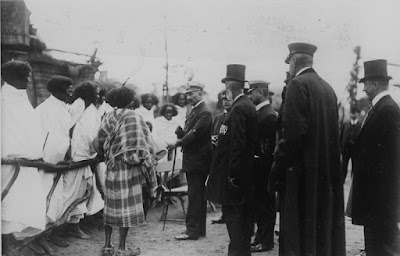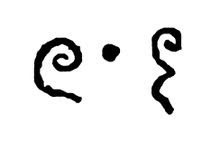A zoo, short for zoological gardens is a place where animals are kept in captivity. Modern zoos are not only to be for people's entertainment, but for also education, research, and the conservation and protection of different species.
Zoos with collections of native or exotic animals date back to ancient times. Private collections of animals and were first recorded in Egypt about 1500 BC, when one zoo, established by Queen Hatshepsut held leopards, monkeys, and a giraffe.
The ancient Chinese also kept animals for display. The earliest records of zoos in China are from the 12th century BC, during the Chou Dynasty. Animals collected from throughout the regionwere kept near the palace.
When The ancient Greeks imported peafowl from India, so many people came to view them that, for the first time an admission fee to a zoowas charged .
During Ptolemy II's reign in Egypt from 283 to 246 BC, he developed the Alexandria zoo into the greatest collection of animals the world had yet known.
Throughout the Middle Ages, rulers kept zoos or menageries forpurposes of education or status, or to satisfy a fascination. Among them was the Caliph of Baghdad in the 8th century AD, Henry I of England in the 12th century, and the Mongol emperor Kublai Khan in the 13th century.
The Tower of London housed England's royal menagerie for several centuries.
The first public zoo was the Viennese zoo at Schonbrunn. Founded as a royal menagerie in 1752, it opened to the public in 1765 - but only if the visitorswere dressed properly.
The Paris Zoo began in 1626 as, the Jardin des Plantes, a physic garden growing medicinal herbs. In 1795,a public zoo inside the Jardin des Plantes was founded by Jacques-Henri Bernardin , with animals from King Louis XIV's menagerie at Versailles. primarily for scientific research and education.
The price of admission for a zoo in 18th century England was a dog or a cat -they were fed to the lions.
The Zoological Society of London was founded in 1826 and opened its gardens - the first to be called a zoo - in 1828. (It wasn't called "The Zoo until the 1920s) . Originally intended to be used as a collection for scientific study, it was eventually opened to the public in 1847. Notices on the cages politely requested lady visitors to refrain from poking the beasts through the bars.
In 1853, London Zoo opened the world's first public aquarium, the Aquatic Vivarium,
The oldest North American zoo is in Central Park, New York, City founded in 1865.
In 1859, the Philadelphia Zoological Society hadmade an effort to establish a zoo, but delayed opening it because of the American Civil War. It eventually opened on July 1, 1874 with 1,000 animals and an admission price of 25 cents.
Dallas Zoo started out with just two deer and two mountain lions. These animals went on display in 1888 at the zoo's original home in City Park.
Carl Hagenbeck, a German animal dealer and zoo owner, developed themoat technique of displaying animals, which greatly improved their conditions. Hagenbeck Zoo, founded in 1907, was the first zoo in the world to house animals in open-air pens.
The world's first open plan zoo, Whipsnade, in Bedfordshire, England, opened to the public in 1927.
The children's section of London Zoowas opened by the American Ambassador Joe Kennedy's young sons, six-year-old Teddy Kennedy and 12-year- old Bobby Kennedy, the younger brothers of future US President John F. Kennedy on June 2, 1938.
Adolf Hitler was the first European leader to ban human zoos, a popular attraction in Europe where exotic peopleswere paid to be on exhibit for onlookers, with recreated habitats and shows. Belgium was the last to ban them, in 1958.
The Skansen Zoo in Stockholm once let a king cobra wander across zoo grounds at night to stop a spate of burglaries—it worked.
When poisonous frogsare fed zoo diets they no longer become poisonous. The wide variety of food in the wild supplies them with the chemicals for making poison.
In the elections for mayor of Rio de Janeiro in 1988 the population was so unhappy with politicians, that a well-known monkey of the local zoo received over 400,000 votes.
The zoo in Tokyo closes for two months of the year so animals can have a holiday from visitors.
The Pyongyang Central Zoo in North Korea is home to a parrot than can squawk "Long live the Great Leader, Comrade Kim Il-sung" in English.
The actress Betty White is a huge animal lover who would have become a zookeeper had she not gone into acting. She rejected a role in As Good As It Gets because of an animal crueltyscene, she visits local zoos when traveling, and she's been a long-term board member and generous donor to the Los Angeles Zoo.
Source Compton's Encyclopedia
 |
| The "Tiergarten Schönbrunn |
HISTORY
Zoos with collections of native or exotic animals date back to ancient times. Private collections of animals and were first recorded in Egypt about 1500 BC, when one zoo, established by Queen Hatshepsut held leopards, monkeys, and a giraffe.
The ancient Chinese also kept animals for display. The earliest records of zoos in China are from the 12th century BC, during the Chou Dynasty. Animals collected from throughout the region
When The ancient Greeks imported peafowl from India, so many people came to view them that, for the first time an admission fee to a zoo
During Ptolemy II's reign in Egypt from 283 to 246 BC, he developed the Alexandria zoo into the greatest collection of animals the world had yet known.
Throughout the Middle Ages, rulers kept zoos or menageries for
The Tower of London housed England's royal menagerie for several centuries.
 |
| Tower of London Picture from the 15th century, British Library |
The first public zoo was the Viennese zoo at Schonbrunn. Founded as a royal menagerie in 1752, it opened to the public in 1765 - but only if the visitors
The Paris Zoo began in 1626 as, the Jardin des Plantes, a physic garden growing medicinal herbs. In 1795,
The price of admission for a zoo in 18th century England was a dog or a cat -
 |
| London Zoo 1835 |
In 1853, London Zoo opened the world's first public aquarium, the Aquatic Vivarium,
The oldest North American zoo is in Central Park, New York, City founded in 1865.
In 1859, the Philadelphia Zoological Society had
Dallas Zoo started out with just two deer and two mountain lions. These animals went on display in 1888 at the zoo's original home in City Park.
Carl Hagenbeck, a German animal dealer and zoo owner, developed the
The world's first open plan zoo, Whipsnade, in Bedfordshire, England, opened to the public in 1927.
The children's section of London Zoo
ZOO FUN FACTS
Adolf Hitler was the first European leader to ban human zoos, a popular attraction in Europe where exotic peoples
 |
| Wilhelm II during a visit on 1909 to Hagenbeck Zoo speaking with human exhibitions. |
The Skansen Zoo in Stockholm once let a king cobra wander across zoo grounds at night to stop a spate of burglaries—it worked.
When poisonous frogs
In the elections for mayor of Rio de Janeiro in 1988 the population was so unhappy with politicians, that a well-known monkey of the local zoo received over 400,000 votes.
The zoo in Tokyo closes for two months of the year so animals can have a holiday from visitors.
The Pyongyang Central Zoo in North Korea is home to a parrot than can squawk "Long live the Great Leader, Comrade Kim Il-sung" in English.
The actress Betty White is a huge animal lover who would have become a zookeeper had she not gone into acting. She rejected a role in As Good As It Gets because of an animal cruelty
Source Compton's Encyclopedia
















